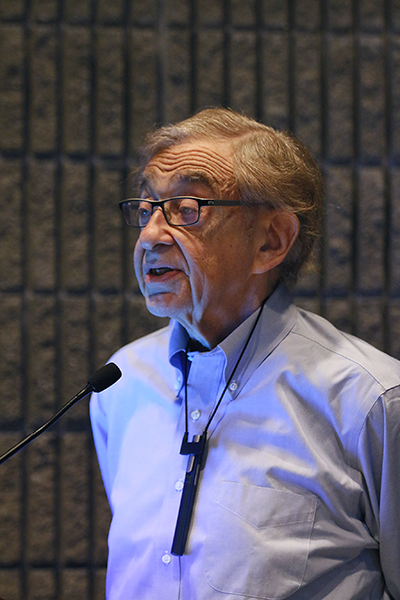Psychiatrists Urged to Incorporate AA’s 12-Step Program Into Treatment

Psychiatrists should attend a meeting of Alcoholics Anonymous to acquaint themselves with the most accessible and successful treatment for alcoholism, said Marc Galanter, M.D. (pictured above), at a symposium today at APA’s 2016 Annual Meeting in Atlanta titled “How to Use Alcoholics Anonymous in Clinical Practice.”
Galanter is a professor of psychiatry and director of the Division of Alcoholism and Drug Abuse at New York University School of Medicine.
Galanter said the 12-step program can be an integral part of treatment of substance use in a psychiatric setting. He was joined at the session by Joseph Westermeyer, M.D., Ph.D., a professor of psychiatry at the University of Minnesota; John A. Fromsbon, M.D., chief of psychiatry at Brigham and Women’s Faulkner Hospital and vice chair for community psychiatry at Brigham and Women’s Hospital; and Alphonse Roy III, M.D., an addiction psychiatrist in Metarie, La.
Galanter and colleagues described the principles of the 12-step AA program, developed in the 1930s by Bill Wilson and Bob Smith, M.D. Galanter said that AA uses many of the psychosocial features that operate in any charismatic membership group: social cohesion through attendance at regular meetings, a belief system embodied in the book Alcoholics Anonymous, a behavioral program of action requiring an individual to practice the 12 steps, and an emphasis on cognitive change by altering habits and avoiding “people, places, and things” that serve as triggers for alcohol or drug use.
Galanter has developed and practices “network therapy,” an approach to recovery from substance use disorders that builds clinically on a patient’s relationships. (The model is described in the 2003 book from APA Publishing, Network Therapy for Alcohol and Drug Abuse: Effective Office-Based Therapy. He is also the coeditor of the American Psychiatric Publishing Textbook of Substance Abuse Treatment, Fifth Edition. APA members can purchase both books at a discount here.
(Image: David Hathcox)
|
|
|
|
|


